
Mecodema is a genus of large flightless ground beetle (Carabidae) endemic to New Zealand. The genus is very diverse in comparison to the other three New Zealand genera within the subtribe Nothobroscina. Mecodema is geographically widespread across both the North and South Islands, as well as numerous offshore islands, including the Three Kings Is., Poor Knights Is., Aotea and Hauturu, Kapiti Is., Stephens Is., Stewart Is., Chatham Is., Snares Is.

Mecodema oconnori is a large-bodied species of ground beetle endemic to the lower half of the North Island, New Zealand. It is mainly found in native forest habitats on the western side of the Tararua and Ruahine Ranges, but is also found in the Manawatu Gorge and some other eastern localities.

Harpalus affinis is a species of ground beetle native to the Palearctic, and introduced in the Nearctic and the Australasian region. In Europe, it is only absent in the following countries or islands: the Azores, the Canary Islands, the Channel Islands, Crete, Cyclades, Dodecanese, the Faroe Islands, Franz Josef Land, Gibraltar, Iceland, Madeira, Malta, Monaco, the North Aegean islands, Novaya Zemlya, San Marino, the Savage Islands, Sicily, Svalbard and Jan Mayen, and Vatican City. Its presence on the Balearic Islands and Sardinia is doubtful.

Oregus is a genus of beetles in the family Carabidae that is endemic to New Zealand. A 2003 taxonomic revision of the group using both morphological and DNA characters concluded that it contained four species, and identified new species from Marlborough and North Canterbury. The current species list is:
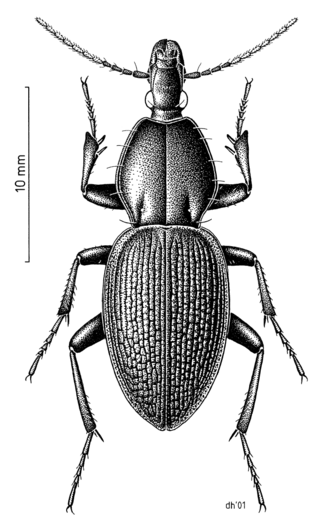
Maoripamborus fairburni is a species of beetle in the family Carabidae, the only described species in the genus. The genus is endemic to the northern North Island of New Zealand, and is most closely related to the Australian genus Pamborus.

Gaioxenus is a genus of beetles in the family Carabidae. Gaioxenus pilipalpis is the only species in the genus. This genus and species was first described by Thomas Broun in 1910. Broun based the descriptions on specimens he collected in Raurimu in the Manawatū-Whanganui region of New Zealand. Gaioxenus pilipalpis is endemic to New Zealand.
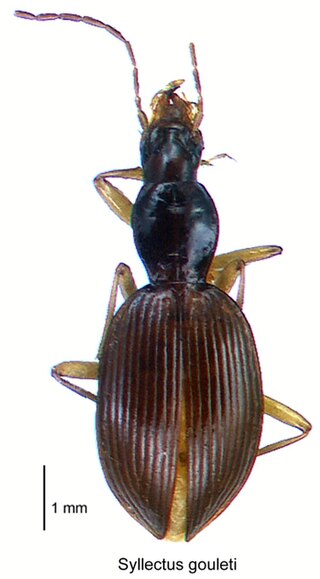
Syllectus is a genus of beetles in the family Carabidae, endemic to New Zealand.

Triplosarus novaezelandiae is a species of beetles in the family Carabidae, the only species in the genus Triplosarus. It is endemic to New Zealand.
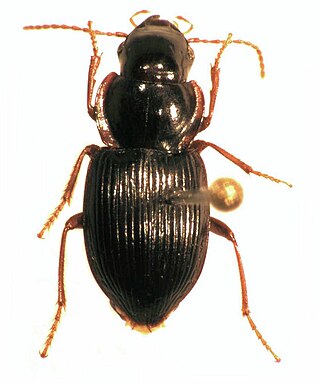
Tuiharpalus is a genus of beetle in the family Carabidae, endemic to New Zealand, where it occurs only in Northland and on the Three Kings Islands.
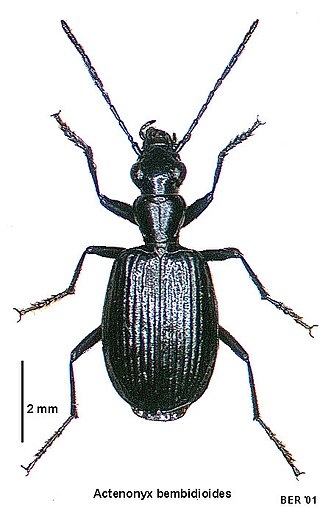
Actenonyx is a genus of beetles in the family Carabidae. At present only species in this genus is Actenonyx bembidioides. However it has been suggested that a taxonomic revision of this genus is needed as there are two species that await description. This genus and species was first described by Adam White and is endemic to New Zealand.
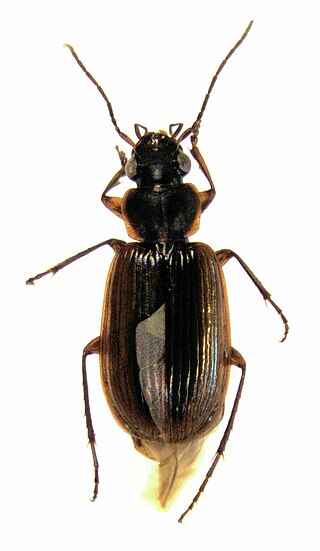
Physolaesthus is a genus of beetles in the family Carabidae, containing the following species:
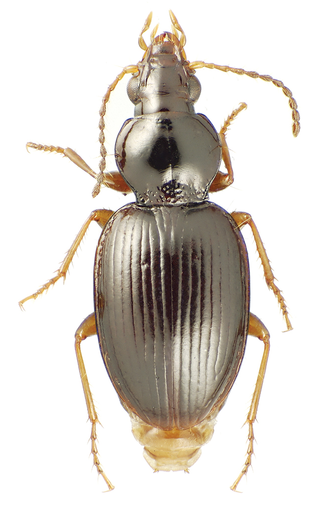
Mecyclothorax is a genus of beetles that contains over 400 described species or subspecies, mostly from the Hawaiian Islands, and Tahiti and Moorea, French Polynesia. Additional radiations have evolved in Queensland, Australia, New Guinea and New Caledonia. The genus has been divided into five subgenera: Eucyclothorax Liebherr 2018 of Australia, Qecyclothorax Liebherr 2018 of Queensland, Australia, Meonochilus Liebherr & Marris, 2009 of New Zealand, Phacothorax Jeannel 1944 of New Caledonia, and the more widely distributed subgenus Mecyclothorax Sharp 1903 [in Australia, the Sundas, New Zealand, the Society Islands, and Hawaii]. The adelphotaxon to Mecyclothorax is hypothesized to consist of the genera associated with Amblytelus Blackburn, also distributed in Australia, and therefore the evolutionary history of Mecyclothorax commenced in Australia.

Psydrinae is a subfamily of beetles in the family Carabidae.
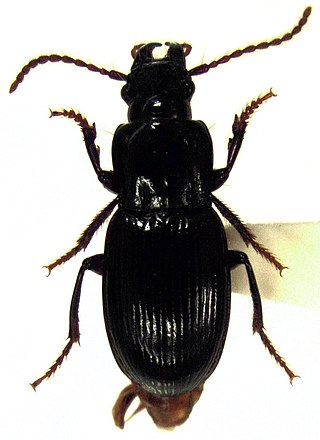
Selenochilus is a genus of beetles in the family Carabidae, endemic to New Zealand, including the following seven species:

Molopsida is a genus of beetles in the family Carabidae, endemic to New Zealand. This genus was first described by Adam White (zoologist) in 1846. Molopsida includes the following six species:

Plocamostethus is a genus of beetles in the family Carabidae. It is endemic to New Zealand. The genus contains the following species:
Waiputrechus is a genus of beetles in the family Carabidae, containing a single species endemic to New Zealand. Waiputrechus cavernicola is known only from a single specimen collected in 1999 by Maree Hunt from a rocky wall inside a cave, Mert's Muddle, near Waipu. It has been classified as "nationally critical" under the New Zealand Threat Classification System.

Selenochilus oculator is a species of beetle in the family Carabidae, endemic to New Zealand, known only from the holotype, reportedly collected at Hunua Range, Auckland.

Ross Taylor Bell was an American entomologist with particular interest in the invertebrate natural history of Vermont, United States, and carabid beetles. Together with his wife, Joyce Bell, his work at the University of Vermont was largely taxonomic, where they described more than 75% of the rhysodine species known to science. Ross also wrote a number of seminal papers in his chosen field.

















